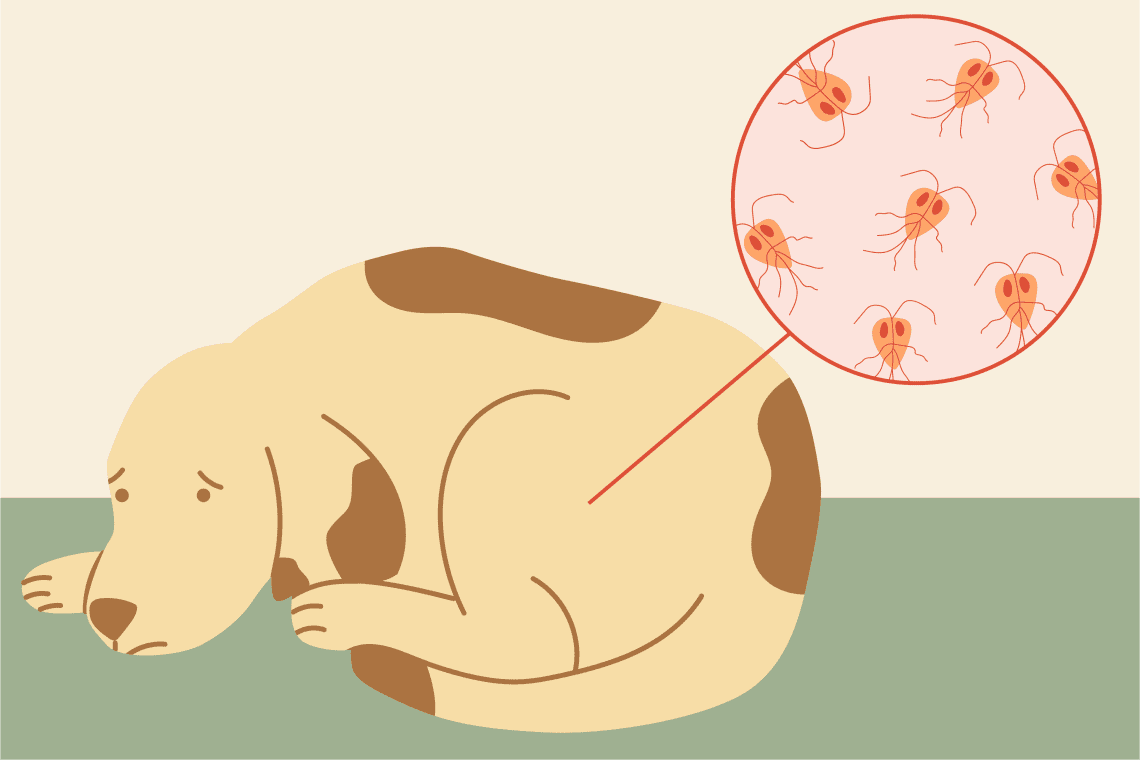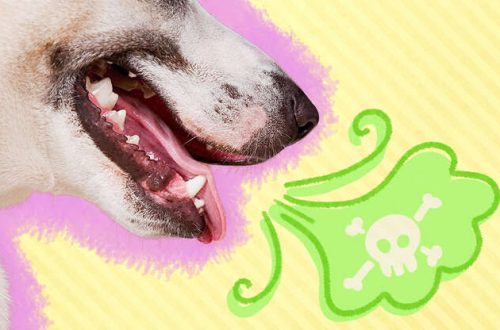
Giardia in dogs: symptoms and treatment
If a dog has stomach problems and the owner cannot determine the cause, it may have giardiasis. This is an infection caused by tiny parasites called giardia. Intestinal giardia is one of the most common intestinal parasites found in dogs. They can wreak havoc on your pet’s digestive system.
Are Giardia dogs transmitted to humans? How to treat giardiasis in dogs? The main thing – further in the article.
What is giardia in dogs
For life and reproduction, Giardia need a host organism – in this case, a dog.
There are two forms of lamblia:
- A single-celled trophozoite, or parasite, that swims and lives in the small intestine of mammals.
- Cyst or egg. A cyst that has entered the feces of an infected animal is already contagious to other animals. Dogs become infected with giardiasis when they ingest a giardia cyst directly from the soil or contaminated water.
Dogs living in stressful environments or high population areas, such as animal shelters, are much more likely to contract an infection due to their close proximity to other dogs.

Giardia in dogs: symptoms and diagnosis
Diagnosing the presence of parasites is difficult because in some cases they cause gastrointestinal problems, usually diarrhea, while in others they do not show any symptoms.
Giardia diarrhea can start suddenly, come and go intermittently, or last for a long time. Giardia is probably more common in dogs than people think because it doesn’t always lead to visible health problems. For the same reason, they are difficult to identify.
A veterinarian can diagnose giardiasis by testing the dog’s stool for the presence of giardia organisms or their antigens. You can take one of these tests on the recommendation of a doctor. In some cases, both analyzes will have to be done, since Giardia is difficult to find in dog feces. It may be necessary to bring several stool samples for analysis before the veterinarian detects parasites.
If a pet has chronic diarrhea and the veterinarian has not been able to detect giardiasis, they may still recommend parasite treatment if they suspect the pet is infected.
How to treat Giardia in dogs
Treatment for giardiasis in dogs includes treating diarrhea and indigestion, as well as eliminating the giardia infection. The dog’s veterinarian will most likely prescribe one or more medications to help clear Giardia from the body.
Among the drugs, this may be fenbendazole or metronidazole. The veterinarian may re-examine the dog after treatment to ensure that Giardia has been eliminated. He will also offer to treat all the pets in the house to make sure none of them have Giardia.
Another aspect of the treatment of giardiasis in dogs is to support the recovery of the gastrointestinal tract through nutrition. The digestive system of a dog diagnosed with giardiasis is weakened and inflamed, so proper nutrition is an integral part of treatment.
Your veterinarian will recommend that you feed your pet soft foods that are easy to digest and promote intestinal recovery. It is generally recommended to feed your four-legged friend soft food until his stool returns to a normal consistency. As a rule, it takes from three to ten days.
Dogs infected with giardiasis may also have an imbalance in the gut bacterial community called the microbiome. If a specialist suspects an imbalance in the microbiome, they may recommend a medicated dog food specifically formulated to increase the beneficial gut bacteria in the microbiome.
It is important to strictly follow the instructions of the veterinarian, to ensure that the dog takes all medications. If her condition does not improve after treatment, you need to call the veterinary clinic.
It is important to understand that people can get giardiasis too. If a dog has been diagnosed or suspected of having giardiasis infection, gloves should be used when handling feces and hands should be thoroughly washed afterwards.
Giardia in a dog can cause her a lot of trouble, or may not appear at all. In any case, with proper examination and treatment, a veterinarian will help remove parasites from the pet’s body and improve his well-being..





